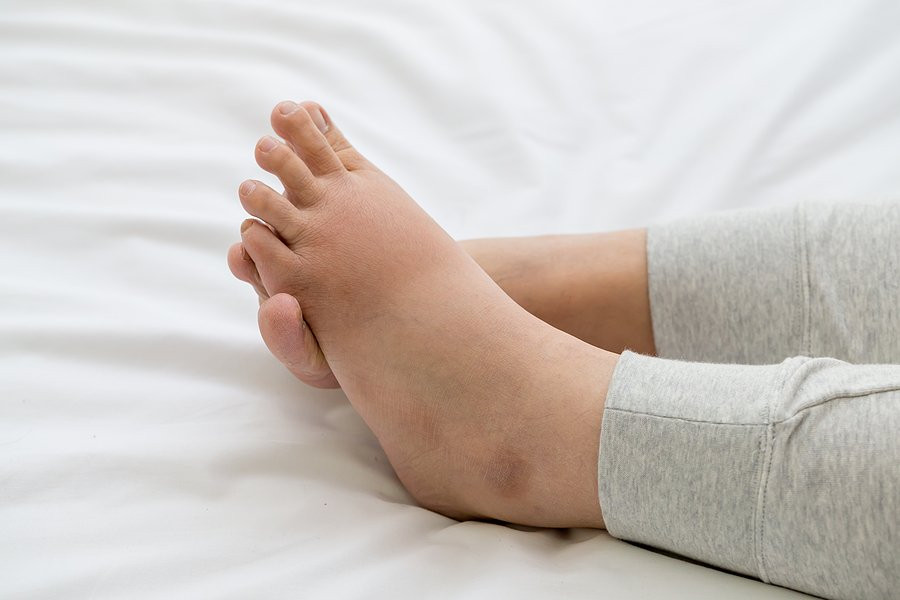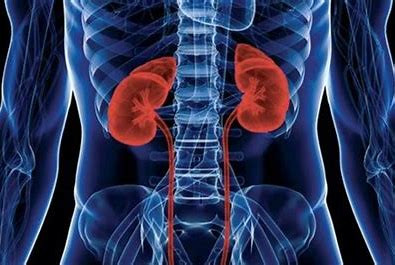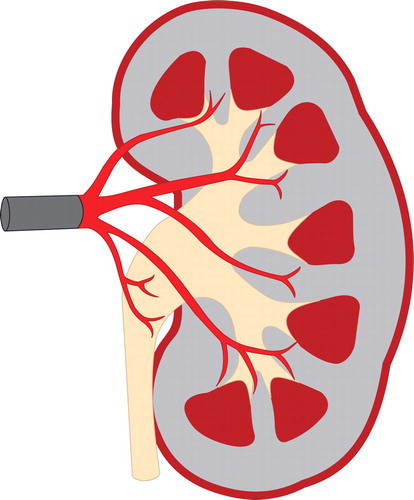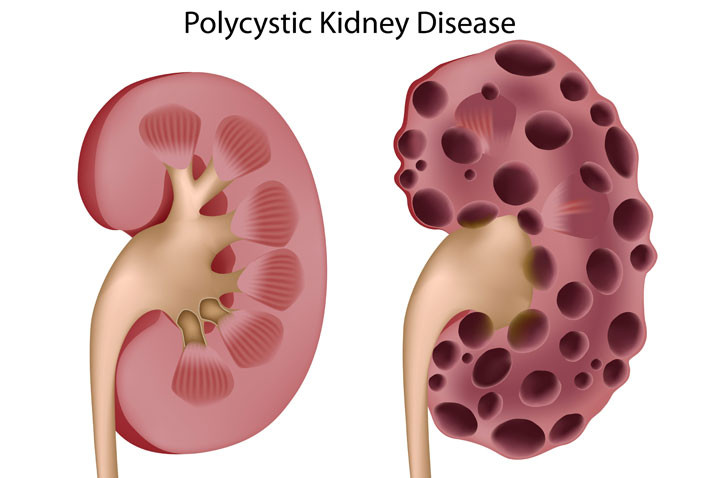Definisi
Retensi cairan atau edema adalah sebuah kondisi ketika jumlah cairan yang berada di dalam tubuh terlalu banyak. Cairan di dalam tubuh manusia dapat ditemukan pada darah, otot, organ, dan bahkan tulang. Air menyusun sebagian besar tubuh manusia. Namun, masalah-masalah tertentu dapat menyebabkan tubuh kesulitan mempertahankan kadar cairan yang normal.
Penyebab
Beberapa penyebab retensi cairan adalah sebagai berikut:
1. Kerusakan Pembuluh Darah Kapiler
Pembuluh darah kapiler merupakan pembuluh darah kecil yang berfungsi untuk mengantarkan cairan ke celah antar jaringan, agar nutrisi dan oksigen dapat diserap sel dengan baik. Beberapa jenis obat seperti obat darah tinggi dapat merusak pembuluh darah ini. Jika pembuluh darah ini rusak, dapat terjadi pembengkakan akibat kebocoran cairan. Bila pembuluh darah kapiler tidak dapat menyerap cairan kembali, cairan akan menetap di jaringan.
2. Gagal Jantung Kongestif
Pompa jantung menjaga tekanan normal pada pembuluh darah. Jika jantung tidak dapat memompa darah dengan baik, tekanan darah dapat berubah dan cairan dapat menumpuk. Penumpukan cairan ini dapat terjadi pada kaki, mata kaki, serta paru-paru, sehingga menyebabkan batuk atau sesak napas.
3. Gangguan Sistem Getah Bening
Sistem getah bening berfungsi untuk membawa sel darah putih, serta mengembalikan kelebihan cairan pada tubuh ke dalam peredaran darah. Gangguan pada sistem getah bening dapat terjadi akibat sumbatan, yang dapat diakibatkan oleh kanker dan infeksi. Jika masalah ini terjadi, dapat terjadi penumpukan cairan pada bagian tubuh yang terpengaruh, misalnya perut, mata kaki, dan tungkai.
4. Masalah Ginjal
Ginjal berfungsi untuk menyaring darah dan menjaga keseimbangan cairan di dalam tubuh. Jika terdapat masalah pada ginjal, fungsi ginjal dalam membuang produk sisa akan terganggu, termasuk cairan dan natrium yang berlebihan di tubuh. Hal ini kemudian bisa menyebabkan cairan menumpuk di dalam tubuh.
5. Malnutrisi
Jika seseorang memiliki masalah gizi, terutama kekurangan protein, tubuh sulit memproduksi albumin. Albumin adalah protein yang membantu menjaga cairan di dalam pembuluh darah. Jika jumlah albumin kurang, cairan sulit dialirkan kembali ke pembuluh darah, sehingga terjadi penumpukan cairan di jaringan.
6. Infeksi dan Alergi
Infeksi dan alergi menyebabkan peradangan. Peradangan memicu tubuh untuk menghasilkan histamin, zat yang dapat melebarkan pembuluh darah. Pembuluh darah melebar agar sel darah putih mudah mencapai pusat infeksi atau alergi, namun juga dapat menyebabkan cairan keluar. Hal ini menyebabkan pembengkakan yang biasanya terjadi sebentar.
7. Masalah Hormon
Masalah hormon yang dapat terkait dengan penumpukan cairan berupa menstruasi, gangguan kelenjar tiroid, dan sindrom Cushing (kelebihan hormon steroid).
Faktor Risiko
Faktor-faktor yang dapat meningkatkan risiko terjadinya retensi cairan adalah sebagai berikut:
- Penerbangan dengan pesawat. Perubahan tekanan pada kabin dan duduk dalam waktu yang lama dapat menyebabkan tubuh mempertahankan air
- Berdiri atau duduk terlalu lama. Gaya gravitasi mempertahankan darah pada anggota gerak tubuh bawah. Oleh karena itu, sebaiknya Anda rajin bergerak atau berjalan singkat untuk memastikan darah tetap mengalir. Jika Anda diharuskan untuk duduk dalam waktu yang lama saat bekerja, Anda dapat membuat jadwal untuk beristirahat dan berjalan-jalan sebentar
- Konsumsi terlalu banyak natrium. Anda dapat mengonsumsi terlalu banyak natrium dari garam dapur atau konsumsi makanan dan minuman dengan bahan pengawet
- Obat-obatan. Beberapa pengobatan dapat menghasilkan efek samping berupa retensi cairan. Obat-obatan ini dapat berupa kemoterapi (terapi kanker), obat antinyeri golongan bebas yang dapat dibeli tanpa resep dokter, obat-obatan darah tinggi, dan antidepresan
- Masalah jantung. Jantung yang tidak dapat memompa darah dengan baik dapat menyebabkan air mengumpul
- Trombosis vena dalam. Pembengkakan pada tungkai dapat disebabkan oleh trombosis vena dalam, yaitu sumbatan pembuluh darah balik oleh bekuan darah
- Kehamilan. Perubahan berat badan saat kehamilan dapat menyebabkan air berkumpul di tungkai jika Anda tidak bergerak secara teratur
- Perubahan hormon dan menstruasi juga bisa meningkatkan risiko retensi cairan pada tubuh
Gejala
Retensi cairan dapat menyebabkan gejala di berbagai bagian tubuh. Daerah yang sering mengalami retensi cairan adalah tungkai bawah, tangan, perut, dan dada. Pada kaki dan tangan, gejala retensi cairan yang dapat diamati berupa:
- Bengkak
- Perubahan warna kulit
- Kulit berkilau atau tampak mengembung
- Kulit yang mengembung ketika ditekan dan dilepas akan tetap melengkung ke dalam (edema pitting)
- Gatal dan panas pada daerah yang terkena
- Kekakuan sendi
- Penambahan berat badan
Apabila retensi cairan terjadi pada otak, hal ini disebut sebagai hidrosefalus. Gejala yang dapat muncul berupa muntah, pandangan buram, sakit kepala, dan masalah keseimbangan. Masalah ini dapat mengancam nyawa.
Sementara itu, kelebihan cairan pada paru-paru disebut sebagai edema paru. Edema paru dapat menandakan adanya masalah serius pada jantung dan sistem pernapasan. Gejala yang terjadi dapat berupa sesak napas, batuk, nyeri dada, dan lemas, karena tubuh kesulitan mendapatkan oksigen secara efektif.
Diagnosis
Diagnosis retensi cairan terutama ditegakkan melalui pertanyaan mengenai riwayat kesehatan Anda dan pemeriksaan fisik. Biasanya dokter akan terfokus untuk mencari tahu bila retensi cairan ini disebabkan oleh penyakit berat seperti gagal jantung, gagal organ hati, dan gagal ginjal.
Pada kasus-kasus tertentu, dokter akan melakukan pemeriksaan penunjang seperti pencitraan yaitu rontgen, ultrasonografi, magnetic resonance imaging (MRI), serta pemeriksaan laboratorium seperti pemeriksaan darah lengkap dan pemeriksaan kencing untuk diagnosis lanjutan.
Tata Laksana
Beberapa penanganan retensi cairan dapat dilakukan sendiri, misalnya:
1. Diet Rendah Garam
Anda dapat mencoba membatasi konsumsi natrium hingga 2,3 gram per hari. Konsumsi natrium dari garam dapur mungkin tidak akan terlalu banyak, namun Anda juga mendapatkan natrium dari makanan-makanan dengan bahan pengawet. Anda dapat mengganti makanan dengan bahan pangan alami atau mengganti garam dengan rempah lainnya.
2. Konsumsi Makanan Kaya Kalium dan Magnesium
Kedua zat ini dapat membantu menyeimbangkan kadar natrium. Makanan kaya kalium dan magnesium dapat berupa pisang, alpukat, tomat, kentang manis, serta sayur dengan daun-daunan, seperti bayam.
3. Konsumsi Protein
Protein dapat menjaga kadar cairan di dalam pembuluh darah, sehingga cairan tidak mudah bocor ke jaringan dan menyebabkan bengkak.
4. Mengangkat Kaki
Anda dapat memposisikan kaki lebih tinggi daripada dada agar air mudah mengalir ke jantung.
5. Menggunakan Stocking Kompresi atau Celana Legging
Stocking dan legging dibuat pas dengan tubuh, sehingga mungkin membuat Anda merasa tidak nyaman. Namun, stocking dan legging dapat membantu melancarkan aliran darah balik ke jantung dan mencegah penumpukan cairan di kaki.
Jika setelah melakukan hal di atas Anda masih mengalami retensi cairan, Anda dapat berkonsultasi pada dokter. Dokter akan meresepkan obat-obatan diuretik, yaitu obat-obatan yang berfungsi untuk memperlancar pengeluaran cairan lewat kencing.
Komplikasi
Retensi cairan yang terjadi terus-menerus dapat menandakan adanya kondisi yang parah seperti trombosis vena dalam, edema paru, atau fibroid pada wanita. Jika terapi di atas tidak melegakan gejala Anda, dokter mungkin dapat membantu Anda dengan obat-obatan seperti diuretik, suplemen khusus, dan pil KB untuk membantu kontrol hormon.
Pencegahan
Pencegahan retensi cairan dapat dilakukan dengan cara:
- Menjaga berat badan ideal
- Berolahraga teratur
- Menghindari duduk atau berdiri terlalu lama
- Berjalan kaki sebentar saat melakukan perjalanan panjang
- Menghindari suhu ekstrem, misalnya sauna, pemandian air panas, atau berendam
Selain itu, Anda juga dapat menjaga diet rendah natrium untuk menurunkan risiko retensi cairan.
Kapan Harus ke Dokter?
Jika Anda memiliki kondisi jantung, getah bening, ginjal, atau paru, mungkin dokter Anda akan menangani retensi cairan bersama dengan kondisi-kondisi tersebut. Jika Anda tidak memiliki masalah-masalah tersebut sebelumnya, Anda dapat berkonsultasi pada dokter apabila retensi cairan mengganggu aktivitas Anda sehari-hari atau terus-menerus muncul meskipun Anda sudah melakukan terapi sendiri.
Mau tahu informasi seputar penyakit lainnya? Cek di sini, ya!
- dr Hanifa Rahma
Brazier, Y., & Sullivan, D. (2020). Water retention (fluid retention): Causes, symptoms, and treatments. Retrieved 11 May 2022, from https://www.medicalnewstoday.com/articles/187978
Edema - Diagnosis and treatment - Mayo Clinic. (2020). Retrieved 11 May 2022, from https://www.mayoclinic.org/diseases-conditions/edema/diagnosis-treatment/drc-20366532
Khatri, M. (2022). Why Am I Retaining Water?. Retrieved 11 May 2022, from https://www.webmd.com/diet/why-am-i-retaining-water
Purdie, J. (2018). Water Retention: Remedies, Symptoms, Causes, and More. Retrieved 11 May 2022, from https://www.healthline.com/health/water-retention












